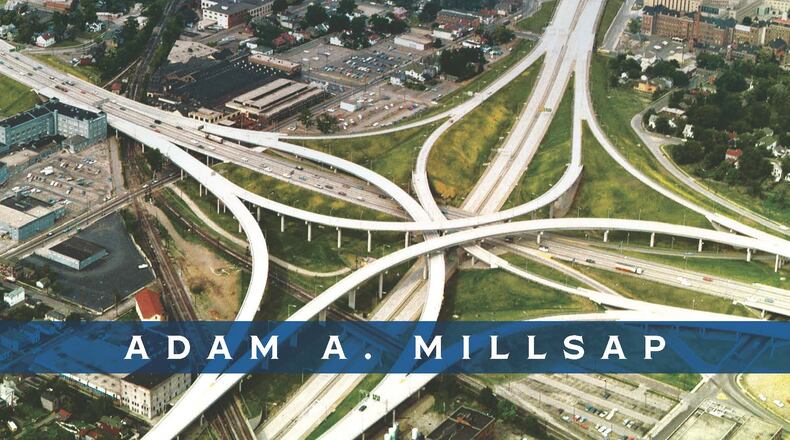Having a history of innovation isn’t enough in 2019, Millsap argues in the 171-page book. Dayton, a cold-weather, blue-collar city, needs to do and offer more than its competitor cities who may enjoy warm climates and ocean breezes, he writes.
Millsap’s thesis: Dayton has been in a state of gradual decline longer than you may think — since the 1930s, in his view.
MORE: DP&L users will get a break in their monthly bills. Here's why
But Dayton can rebound, if the city eases regulations, controls spending, makes tax rates competitive and creates an atmosphere of “permission-less innovation,” he writes.
“Some people might think these changes are too radical, but underdogs must often take radical steps to overtake the favorites, and right now, Dayton is an underdog,” Millsap writes.
Dayton’s municipal population has declined from more than 260,000 residents in 1960 to about 140,000 people today.
This is an edited transcript of a recent interview with the author:
Question: What inspired you to explore Dayton at book length?
Millsap: "I was raised in Dayton until I was young, then I moved to the suburbs of Beavercreek, where I graduated high school. My family still lives in the area. I've always been interested in why some cities grow and why some cities shrink, and what cities can do to turn their fortunes around.
“When I was exploring this question throughout graduate school, I kept coming back to examples from Dayton.”
Q: You really widen your lens and say Dayton's decline began in the 1930s. Why?
Millsap: "I think that's right. I think when you look at population changes, you have the Great Depression, which affected Dayton as it affected other cities. Dayton had a pretty good rebound during World War II — all the manufacturing there, all the government contracts — but even then you could really see the (Montgomery) county was growing faster than the city. People starting moving out to the suburban locations, Kettering and places like that.
“The city itself was starting to lose its place as kind of the economic focal point of the region, even as early as the 1940s. And that just accelerated throughout the 1950s and ’60s, with higher income, higher-educated (people) moving out to the suburbs, and then the (construction of the) highways.”
Q: What do you see the population doing today?
Millsap: "It seems to have flatlined since 2010. I think estimates between Censuses tend not to be completely accurate. You'll see adjustments. I think we'll definitely have to wait for 2020 to know for sure.
“I wouldn’t be surprised if the decline has slowed. For some of the reasons I explain in this book, there is this broader movement back to the cities and less of this idea that everyone needs to get out and get to the suburbs.
“And some of the economic forces working against cities I think have ameliorated, giving cities a chance to bounce back.”
Q: You're advising Dayton to control spending, ease regulations and encourage innovation?
Millsap: "There's no silver bullet to these policies, where cities can just say, 'Hey, we'll start to grow again.' I think a lot of cities try to chase that idea. …
“What city officials can do is focus on: Are we spending our tax dollars in the most efficient way we can, are we keeping our taxes as low as we possibly can given what our resource needs are? Are we keeping our infrastructure up to date? Are we adding housing in the right neighborhoods? That means we’re not restricting zoning in the places where people want to live.”
About the Author

